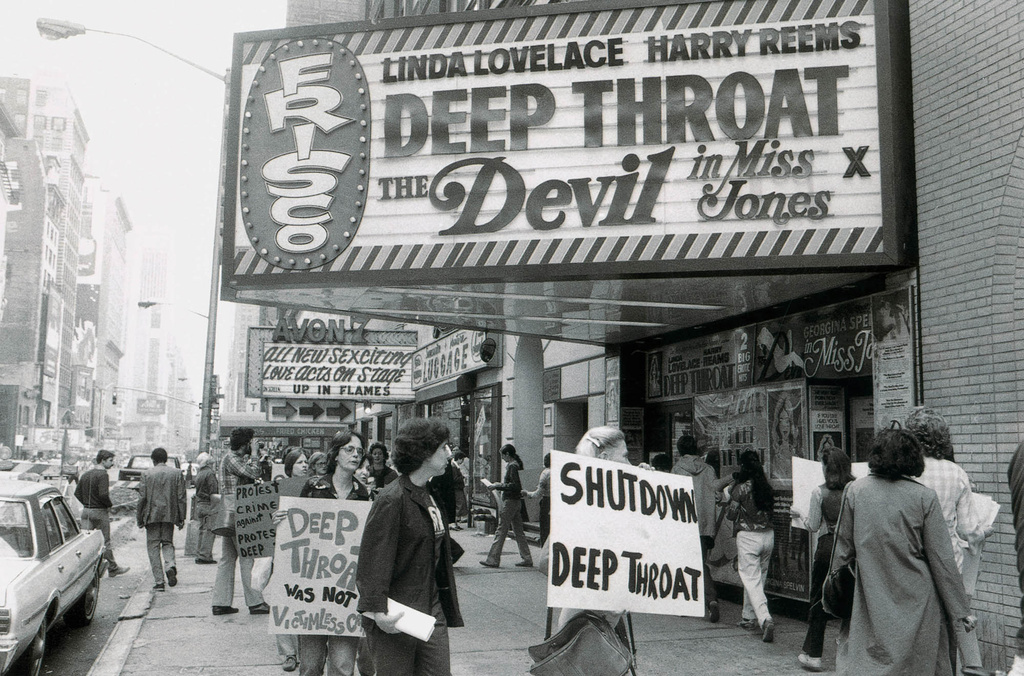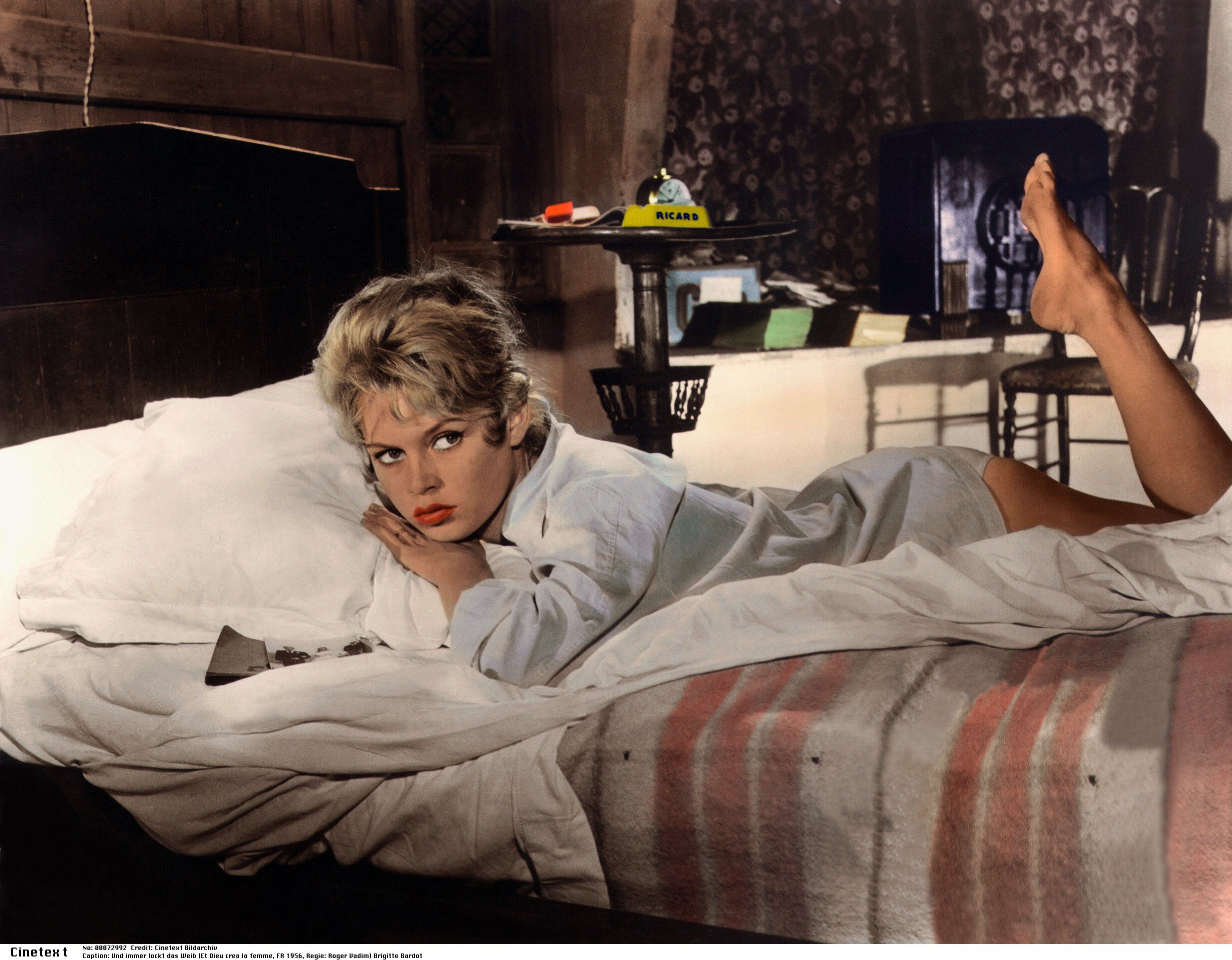A behind-the-scenes look at the porn industry

Free sites and amateur videos have all but ruined the traditional porn industry in Switzerland, as elsewhere. Those who make their living from X-rated films have to find new approaches to the market.
Take a woman, blonde, brunette or redhead – it doesn’t matter much. She smiles, groans, and yells. A man is engaged in intercourse with her – face-to-face, from behind, from the side. The video camera picks up every movement and records the encounter in the greatest detail. The scene is repeated. There is no plot, no script, and just one objective: to excite the viewer by reproducing a sexual act in all its crudeness and artificiality.
It is mostly from such sequences of images that today’s pornographic videos, downloaded hundreds of thousands of times a day, are made. In recent years, the porn industry has been booming while also benefiting from a lack of controls.
Sites like Xvideos, Xhamster and Youporn have some of the biggest traffic volumes in the world and provide every kind of material imaginable. Free, easy to access and consume, they are a by-product of the evolution of the web and of a society that wants everything and wants it now.
While the range of material available on the internet is expanding all the time, thanks to home-made productions, the traditional industry is declining and fewer and fewer pornographic films are being produced to artistic standards.
This evolution has pushed anyone who works in the X-rated cinema sector in Switzerland, or just feels the need for a more artistic kind of pornography, to look for new outlets. Such is the case with Sabine Fischer and Sandra Lichtenstern.
With degrees in art and design from Zurich, these women in their thirties started producing pornographic movies almost as a game, using old films from the 1970s.
“We look for the scenes that are most tongue-in-cheek, entertaining, or even schmaltzy, and then we cut them out and put them back together again in a new artistic product”, explains Lichtenstern. “We believe that pornography needs the support of artists so as not to turn into a product for people obsessed with sex, and to distance itself from all this dreadful mediocrity.”
Begun in the summer of 2009, their project has had unexpected success: thousands of copies sold in a matter of months without any publicity except word-of-mouth, an audience made up mainly of couples.
Humour and emotion
Fischer and Lichtenstern’s decision to concentrate on the seventies was not accidental.
“In those days there were no digital video cameras and making a pornographic film took time, money and cinematographic technique”, notes Sara.
“Staging was planned down to the last detail, and often films began with an erotic scene in which you caught a glimpse of a bare leg or uncovered breast. Nothing like the stereotyped characters today, which look like dolls doing stretching exercises. If you study an old film you will always find a plot, timing and real dialogues. This was the period of great comedies which had room both for humour and emotion.”
While the earliest pornographic films go back to the 1920s, they succeeded in emerging from the shadows of illegality only in the 1970s, riding the wave of the sexual revolution. It was then that the first films were shown in mainstream cinemas and greeted with a mixture of curiosity and enthusiasm by post-1960s society.
“In the press at that time there was talk about a new style of film-making that was conquering Hollywood,” explains French philosopher Julien Servois, who has written an essay on the development of X-rated cinema.
“When Deep Throat, by Gerard Damiano, came out in 1972 it was such an event that even Jackie Kennedy went to see it at the cinema in New York.”
“At the time it still seemed possible that pornography might be accepted as part of social life and become a fully-fledged genre of cinema like westerns and musicals,” notes Servois.
This broad-minded interlude did not last long, however. Very soon, both in the US and in Europe, censorship restricted X-rated cinema to specialised venues and made it essentially a male pursuit. In Switzerland, the more extreme scenes were cut or adjusted to meet the standards of the cantons and the cinemas were regularly subjected to searches by the police.
Heyday of the Swiss industry
A well-known figure in the Zurich punk scene, Peter Preissle started working in the pornographic industry in 1979 and experienced in his own career all the stages that brought X-rated films from the underground to mass consumption.
First a ticket-seller, then a projector operator, in time he became the trusted lieutenant of Edi Stöckli, the man who owns almost all the X-rated cinemas in Switzerland and founded the country’s main production and distribution house for pornography, Mascotte Film.
swissinfo.ch met him at the head office of the company, in a back alley in Zurich’s red-light district. “One time we were able to make a lot of money without much effort, but today we have to work three times as hard just to break-even. Competition is cut-throat and the industry has become a field for silly old fools,” says Preissle.
“We have to try to adapt to changing times, say producing more shorts or films with episodes, seeing as the young people are no longer used to sitting down for more than half an hour at a stretch.”
In its heyday, Mascotte Film produced up to 240 films a year. Today it has trouble making 120.
“When there was still 35-mm film, you paid up to SFr200,000 to produce a movie, whereas today it costs between SFr40-50,000. Shooting takes a few days: same cameraman, same lighting, same scenario, same cast. Like in a football match. However, it is becoming more and more difficult to find good films to show in cinemas and young actors willing to take part.”
At least 3,000 films are archived at the company’s offices. They are shown in specialised cinemas, sold as DVDs or put on the internet sites of the group. It was here that Lichtenstern and Fischer looked for material for their research, on the shelves containing over 50 years of history of “adult” movie-making.
Meeting places
To deal with the competition on the web, the Stöckli group has tried to revamp its own market strategy. “Today you don’t get rich making porn, but the industry is not dead yet,” comments Preissle, who prefers not to reveal how much the company is currently worth.
The “adult” cinemas – about ten in Switzerland – have developed into places for meeting and exchange, following the advent of private booths. Single, double and even communicating, these miniature cinemas provide increased privacy and the opportunity to watch videos for a few francs.
There are also regular exhibitions of erotic art, and guest appearances of porn stars as a way to make them more “human” and close to the public.
“Just as is happening with mainstream cinemas, the pornographic ones too have declining ticket sales. But they still maintain their fascination. They allow people not to leave a trace, as happens on the Internet, and to make seeing a film a special event,” notes Preissle.
While interactive chats and homemade videos are mushrooming on the web, the best the pornography industry can do is to focus on extra quality, charm and a dash of mystery: these are things which homemade productions cannot yet boast. It is perhaps the only way left for the porn industry to survive.
Among the least transparent industries in the world, pornography is often linked to organised crime, human trafficking and money-laundering.
Revenues are hard to calculate, but according to an estimate by The Economist in 2008 they exceeded those of the cinema and music industry by $20 billion.
Uncontrolled distribution of pornographic material on the internet has raised concerns about the protection of children and adolescents, and the risk of conveying a distorted image of sexuality.
Educational and medical authorities have increased their efforts to raise awareness in this area. Nevertheless several cantons are opposing the idea of new school books for sex education that would be more open and explicit.
Meanwhile, among adults, cases of pornography addiction are being reported. In Geneva, the university hospital has opened a new centre to respond to these needs.
In Switzerland the Criminal Code penalises neither consumption nor production of pornography. From the age of 16 on, it is legal to watch and download pictures and videos with explicit content.
X-rated films are shown only in specialised “adult” cinemas, of which there are about ten in Switzerland.
Article 197 of the Criminal Code does however forbid the production, consumption and distribution of what is known as hardcore pornography. The law specifies four categories: child pornography; pornography with violence; sexual acts involving human beings and animals; pornographic material involving human excrement.
In 2011 the coordinating office for fighting crime on the internet received 1,206 complaints about alleged hardcore pornography. 90% of these cases involved child pornography.
According to data from the UN, every year over $20 billion are spent around the world on child pornography and under-age prostitution.
(Source: Swiss Agency for Crime Prevention)
(Translated from Italian by Terence MacNamee)

In compliance with the JTI standards
More: SWI swissinfo.ch certified by the Journalism Trust Initiative



You can find an overview of ongoing debates with our journalists here. Please join us!
If you want to start a conversation about a topic raised in this article or want to report factual errors, email us at english@swissinfo.ch.